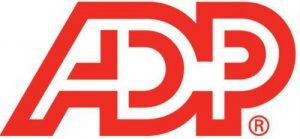
Business Advisory Services
Everything you need to help you launch your new business entity from business entity selection to multiple-entity business structures.
Hey - Our site just had a makeover and we are sorting through the hiccups!
Hey - Our site just had a makeover and we are sorting through the hiccups!

Everything you need to help you launch your new business entity from business entity selection to multiple-entity business structures.

Designed for rental property owners where WCG CPAs & Advisors supports you as your real estate CPA.

Everything you need from tax return preparation for your small business to your rental to your corporation is here.

WCG’s primary objective is to help you to feel comfortable about engaging with us
Posted Sunday, June 28, 2020
Table Of Contents

The life cycle of an S corporation is a common concern among small business owners. The objective of this web page is to address this concern directly but also to demonstrate that it truly is no biggie to own and operate an S corporation. Far too often we see business owners pass on the S Corp election simply out of fear of the unknown, which is unfortunate. Then again, we can’t save everybody.
So, here’s the soup to nuts… the description of a full course dinner, in which courses progress from soup to a dessert of nuts, according to old English. Also, just like your mother says, no dessert until you finish your meal. In other words, no jumping ahead!
Littered throughout our website are the benefits of having an S corporation. Primarily it is the reduction of self-employment taxes (namely Social Security and Medicare taxes). Other benefits such as company cars, solo 401k plans, improved flexibility of tax deductions, and several other things are available to you, as a small business owner, with or without the S corporation election. To reiterate, S Corp benefits should be singular since the primary (and some would argue the only) objective is the reduction of self-employment taxes (not just income taxes).
Before you get too far down this road, you need to answer some basic questions about being an S corporation. If you have already passed the test, so to speak, you can move along to Step 1 below.
Before we get into the fees and how it works, and all that jazz, let’s go through a quick checklist to ensure that we are not going down the wrong road-
Are you still here? Excellent news… read on! You can also complete a PDF version of the above questions, and send them to us for review-

Check out our S Corp questionnaire if you need help figuring them out for your business!
Common S Corp candidates and current clients for WCG are consultants, engineers, financial advisors, physicians, chiropractors, doctors, surgeons, anesthesiologists, nurse anesthetists, insurance agents, attorneys, photographers (the profitable ones), online retailers, FBA retailers, real estate agents, good old fashioned widget makers, among several others.
We also have several medical groups and financial advisor teams. Yes, even those deemed to be specified service trades or businesses still benefit with Section 199A coupled with an S Corp election! Said in another way; Section 199A does not replace or reduce the S Corp benefits.
Joseph Bassett, known around the WCG kegerator as Joey, outlines the 185 reasons you might not want to be an S corporation. That’s not entirely true. Yes, we call him Joey. That’s true. But… he only outlines about 7 different considerations from income levels, to locations, to multiple business owners, to all kinds of things. S Corp elections can be great… but they must be vetted to ensure that a half-baked idea becomes a good idea.
You need an underlying entity that can be taxed as an S corporation. As you might be aware, an S corporation does not exist in the literal sense. It is the result of a tax election on an existing entity. The most common S corporation examples use underlying entities such as limited liability companies (LLCs) and corporations including professional corporations (certain states require accountants, attorneys, physicians and engineers to be professional corporations).
There are times where you’ll want to be a corporation (either C or professional) since you can elect out of certain things; for example, WCG typically creates corporations in California and then have them taxed as an S Corp since corporate officers (as compared to LLC members) can opt out of State Disability Insurance (SDI).
The entity creation step can take anywhere from 30 minutes (Colorado, Wyoming, Florida to name a few) to 4 weeks (California, Pennsylvania, New York, Arizona). Shelf companies are available but more discussion is required and there some risks.
You can certainly do this yourself, but if you want our help so you move on to better things, please let us know!
The IRS issues an employer identification number (EIN). If you have an EIN issued to you as a sole proprietor, then you will need a new one. The IRS has a decent webpage that answers the question “Do I need a new EIN?” Check it out if you already have an EIN from a previous life / entity.
We might be able to resurrect an old EIN that you obtained several years ago. Unlike social security numbers, EINs are not presently recycled. That might change as the rate of small business growth continues to boom.
You will need an EIN for three really big reasons- Form 2553 (S Corp Election), bank account openings and payroll account setup. We can always obtain the EIN concurrent with the Secretary of State filing for the entity creation; however, we caution against this since business names might change or be rejected. And… there is no benefit of having an EIN without Articles of Formation / Incorporation since the bank will want both (Articles + EIN = bank account).
Form 2553 is completed and sent to the IRS for processing. Current times are 8-10 weeks but we don’t sit on our hands… we continue tackling all the other steps.
Concurrent with Steps 3, 4 and 5, you need to open a business banking account. Some business owners will try to use another personal account as a compartmentalized bank account separate from their personal finances. This works right up to the point of needing a voided business check for payroll account (see Step 5). In the past, business banking was expensive with monthly fees, crummy balance thresholds and blah blah blah. Times have changed, and banks are needing to be much more competitive.
From a record keeping and compartmentalization perspective, a separate bank account is just good practice. All the money in is revenue or a loan. All the money out is either an expense, distribution, or loan payment. Personal is separated, and if necessary financial statements can be quickly rebuilt from your bank records.
How do you form an S corporation? Technically, how do you create an entity (LLC, PC, etc.) and have it taxed as an S Corp? Let’s talk about it! Latesha Anderson of WCG Inc.

As an owner of an S corporation you wear two hats, a) investor and b) employee. As an investor, you receive dividends or distributions from your investment. As an employee, you receive paychecks which require quarterly and annual filings. The second element to the payroll requirement is the demand, the unruly and highly objectionable demand, of the tax code to force S corporations to pay a reasonable salary to its active shareholders. This is the yang to the S Corp benefits. Here is a web page dedicated to reasonable shareholder salary-
Another question we get is… I live in Texas. We don’t have an income tax so I don’t need state payroll accounts. Wrong. Every state collects and administers unemployment compensation, and as such, collects unemployment taxes. Unemployment tax is unavoidable, and there are times where it is better to pay the federal unemployment versus the state unemployment taxes. There are other taxes as well such as state disability and local city taxes. We have a great article about this here-
Without proper tax planning, the S Corp benefits might be wasted on poor cash flow management. As such, we need to project your business income, salary and cash needs so you have a tax neutral position for April. Quick list of things we need-
You can submit tax returns, paystubs and other sensitive information to your client portal (Portal button on top of page, upper right). Use the following link to submit your business data via a super easy online digital form-
If you have WCG process your payroll (and you should since payroll is easily broken by the smartest of people, even accountants), we need a voided business check for ADP setup. There are several ways to satisfy this-
This hassle is to curb check fraud. Sorry. More bad news… some states are terrible and can take upwards to 4-6 weeks to process the paperwork for payroll account setup.

This explains how to review your Payroll Plan. A spreadsheet is mostly meaningful to the spreadsheet designer, so please use the link provided in an email to retrieve your Payroll Plan.
After your entity is set up, the S Corp election is made and payroll accounts are setup, then your S Corp benefits turn into a barrage of lather rinse repeats. Generally speaking monthly payroll during Q1 and Q2 is decided early in January or even late December. These are on autopilot. They can also be minimum payrolls for seasonal professions such as real estate agents or landscapers who are short on cash and unsure about the future until late in the year.
Q3 is a mid-course correction or true-up. We obtain updated business income numbers to project salary recommendations and tax liabilities for the entire year.
Q4 is where the runway ends, and all the cans that were kicked down the road (at your request) start to pile up. December is critical. It is the last payroll event where we need to ensure that your salary is reasonable, and that health insurance, HSA and 401k information is accurate (since it is reported on your W-2).
Don’t forget tax returns! S corporation tax preparation and tax returns are due March 15. While S Corps are a pass thru entity, and as such passes its federal income tax liability to the shareholders, some states such as California, New Jersey, Illinois, among several others, have a state tax that is due.
Scattered throughout the year is routine consultation, tax planning and periodic business reviews (PBR). The agenda is below. We have also included a recent article titled “I just got an S Corp puppy. What do I do?” as a companion this article.
Table Of Contents

Tax planning season is here! Let's schedule a time to review tax reduction strategies and generate a mock tax return.

Tired of maintaining your own books? Seems like a chore to offload?
Did you want to chat about this? Do you have any questions for us? Let’s chat!
The tax advisors, business consultants and rental property experts at WCG CPAs & Advisors are not salespeople; we are not putting lipstick on a pig expecting you to love it. Our job remains being professionally detached, giving you information and letting you decide within our ethical guidelines and your risk profiles.
We see far too many crazy schemes and half-baked ideas from attorneys and wealth managers. In some cases, they are good ideas. In most cases, all the entities, layering and mixed ownership is only the illusion of precision. As Chris Rock says, just because you can drive your car with your feet doesn’t make it a good idea. In other words, let’s not automatically convert “you can” into “you must.”
Let’s chat so you can be smart about it.
We typically schedule a 20-minute complimentary quick chat with one of our Partners or our amazing Senior Tax Professionals to determine if we are a good fit for each other, and how an engagement with our team looks. Tax returns only? Business advisory? Tax strategy and planning? Rental property support?

Everything you need to help you launch your new business entity from business entity selection to multiple-entity business structures.

Designed for rental property owners where WCG CPAs & Advisors supports you as your real estate CPA.

Everything you need from tax return preparation for your small business to your rental to your corporation is here.

WCG’s primary objective is to help you to feel comfortable about engaging with us

